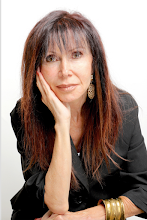Creating
with Glue + Chair = An Experience and Story of Events
|
Creating, making is an experience that students will remember.
Products generated by computer applications are fleeting moments in a student’s
life. But creating, via the kinesthetic touch, is a memorable experience that
one can revisit.
Limited school budgets have sparked my interest in
developing activities using inexpensive resources. I have embraced the
philosophy of mindful imagination and reinvention to aid in the development of
activities that engage students in new ways of learning. To that end sale items
is my focus.
“Decorate
to Educate!”
Scholar's Mantra
|
Consider a bottle of glue and
a chair. What can you create?
This month Scholar’s School Glue and the Blue 14” Classic
Series Chair lend themselves not only to decorating but involve
students in learning.
Activity: The
Unit/ Year in Review!
Material: Scholar’s Glue + Chair
|
1. The activity can be adapted to address a variety of
subject/grade content initiatives and skills. Possible subject applications
include: Social Studies, Senior History, Science, Art, English, Geography
2. Skills addressed:
Imagination
Thinking
Sensory
Visual Discrimination
Motor Skills
Social Skills
Teacher
Preparation required:
|
1. Mix Glue in Scholar’s No Spill Paint Pots with water: 2
parts glue to one part water. This will
create a special mixture called “Podge”.
2. Students will be
divided into 5 groups and will be assigned one topic as listed below.
3. Groups are assigned one chair per group, per topic.
To
Do Instructions for Students:
|
1. Collect 10 significant news (this will occur over the
duration of the unit/semester as determined by the teacher) stories from a
variety sources covering categories as indicated. Students are to select one topic from the list
below, as related to the course.
- Science, Technology, Medicine and Invention
- Environmental Issues, Weather, Natural
Disasters, Earth Science
- Social Justice
- Political Events both Local, National and Global
- Trending Issues
2. Record bibliographic information
of sources retrieved/found. Use a computer citation generator to format
information.
3. Summarize and record the intent of each article in 3
sentences max. Be clear and concise. Submit this record, along with
Bibliographic information for completion and evaluation.
4. Articles are to be
posted along a time-line
of events (using months of the year banners) around the
classroom/library.
5. A 2 minute oral report by
each student, followed by questions and answers, can reinforce knowledge and
skills. This can be a daily or weekly event for the duration of the unit/year.
6. Create Headlines for each event retrieved using a word
processing program. Use interesting font and colour for each headline. Google or a specialized school database can
serve as a search engine facilitating
retrieval of an image to support and illuminate the headline. Sources of images
retrieved must be acknowledged. Images can be searched in a variety of Creative
Commons as well that gives students permission to use images.
7. Print and tear out
the individual headlines and supporting images. You are now going to create a collage of events.
8. 5 chairs, and 5
topics are assigned. Students work in groups to complete the task.
9. Glue headlines and
images to your assigned chair with the mixture
provided. Apply a coat over the image as well. This coat preserves the image
and leaves a matte finish
The
Product: Criteria to consider--Layout and Design…
|
1. When “podging” your headlines and images consider layout and design
techniques to effectively
display your message—The Year/Unit in
Review.
Use this statement to guide your
imagination:
“The Question is
not what you look at but what do you see?”
Henry David Thoreau
|
Suggestions…
·
Use Colour, acylic paint, torn coloured paper to
distinguish topics and add interest.
·
Consider layering, texture/dimension, such as torn
corrugated paper to add interest to each
headline/message.
·
Use frames/shapes/arrows to direct the eye, and
to enclose different ideas, concepts.
·
Use found recycled material, where possible eg.
Birthday present wrap, paper bags, ribbon. Material, when mounted, must lie
flat. The chair must also serve its
purpose as a chair.
·
Use purchased stamps or stamps created from
foam, or found objects to add interest.
·
Melted crayons can also be used to emphasize
topics or to create interest.
*Use the “designer chairs” in the classroom around a table to serve as a special
zone.
*Reuse, Recycle and Repeat the project, every semester or yearly with the same chairs.
Products
to support activity…
Scholar’s Sale
Catalogue:
Scholar’s School
Glue, Blue 14” Classic Series Chair, Acylic Paint, Acylic Paint Brushes,
Coloured Paper, Stamps (Paw Prints, Insects, Finger Stamps), Plastic Jars with Lids, Dollies, Foam to create stamps, Crayons,
Corrugated Rolls, Popping Pattern
Spring Flower Cut Outs, Peace Sign Cut
Outs, Scholar’s No Spill Paint Pots, Month’s
of the Year Banner
|

All Images photographed 2014 and Property of J. Andreacchi
@ Julia Andreacchi 2014
All rights reserved.








